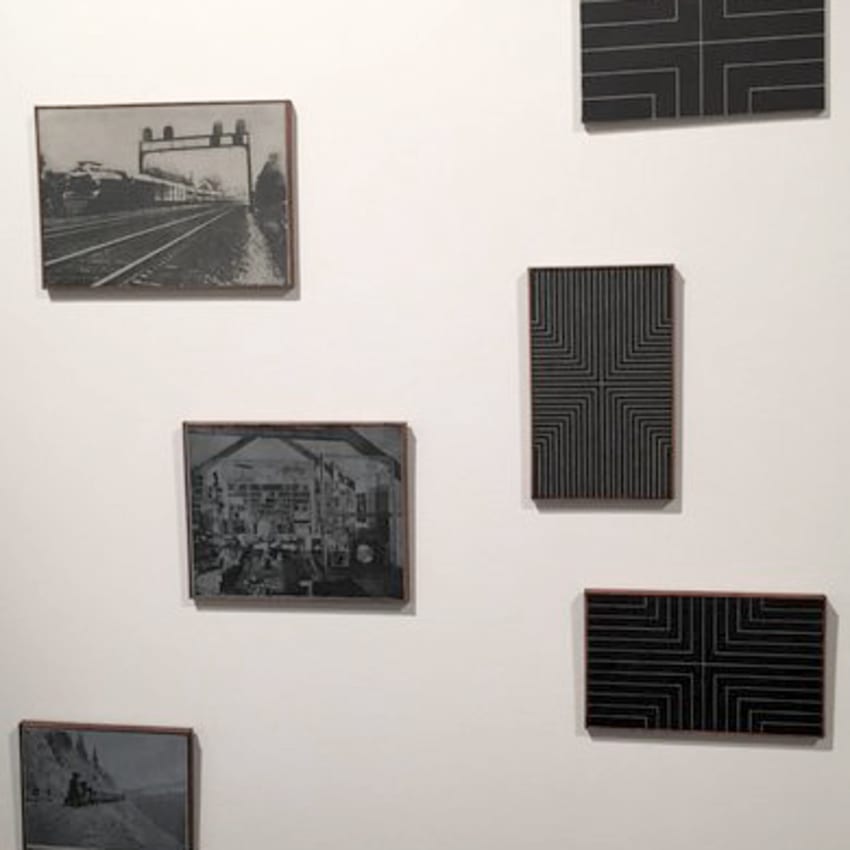![Untitled [Stella, Black Series], circa 1965, Enamel on canvas, 10 x 6 inches](https://artlogic-res.cloudinary.com/w_1000,h_1000,c_limit,f_auto,fl_lossy,q_auto/ws-hollistaggart/usr/images/artists/bio_image_1/93/pettibone-13684-tn-v2.jpg)
Richard Pettibone’s playful compositions take as their material the canvases and images of contemporary and modern art
Richard Pettibone’s playful compositions take as their material the canvases and images of contemporary and modern art, and through this appropriation his work explores questions of artistic authorship and the role of reproduction in the 20th century. Pettibone uses the work of his peers and predecessors as a kind of Duchampian readymade, which he carefully reproduces and either stamps with his own “signature” or combines with other reproductions to form assemblages that often read as surveys of contemporary styles. His selection process is careful and deliberate, and reveals his deep respect for those whose work forms the basis of his own. As scholar Michael Duncan writes in the catalogue for the artist’s recent retrospective, “As a professional artist / critic, Pettibone’s life of art-making has tracked his love of art. In making works that celebrate his mentors, he guides viewers through the intricacies of modern image-making, pointing out the pitfalls and underlining the strong points.” (1)
Richard Pettibone’s playful compositions take as their material the canvases and images of contemporary and modern art, and through this appropriation his work explores questions of artistic authorship and the role of reproduction in the 20th century. Pettibone uses the work of his peers and predecessors as a kind of Duchampian readymade, which he carefully reproduces and either stamps with his own “signature” or combines with other reproductions to form assemblages that often read as surveys of contemporary styles. His selection process is careful and deliberate, and reveals his deep respect for those whose work forms the basis of his own. As scholar Michael Duncan writes in the catalogue for the artist’s recent retrospective, “As a professional artist / critic, Pettibone’s life of art-making has tracked his love of art. In making works that celebrate his mentors, he guides viewers through the intricacies of modern image-making, pointing out the pitfalls and underlining the strong points.” (1)
Richard Pettibone came of age in 1960s Los Angeles at a crucial period in that city’s relationship with contemporary art. Three groundbreaking exhibitions in 1962 and 1963 established Los Angeles as a serious center for new and emerging art and scholarship, and were formative for Pettibone as a young artist: Walter Hopps’ The New Painting of the Common Object at the Pasadena Art Museum, which was the first museum survey of Pop art; the 1962 debut of Andy Warhol’s soup can paintings at the Ferus Gallery; and the 1963 Duchamp retrospective at the Pasadena Museum of Art. At that time, Pettibone was fresh out of graduate school—he had received his MFA from the Otis Art Institute in Los Angeles in 1962—and he cites these three exhibitions as profound and foundational experiences. Pettibone made a name for himself with his miniature recreations of well-known contemporary works, including canvases by Jasper Johns, Andy Warhol, Frank Stella, and Roy Lichtenstein. He worked exclusively from reproductions of the original works, taking his small scale from images found in the then-new Artforum magazine. This project highlighted the central role that photography and reproduction play in the interaction between art and its public, which is often mediated by published images. Over the course of his career, Pettibone employed the aesthetic language of Pop art and its propensity for appropriation with an almost absurdist, Dada sensibility akin to that which underlies Duchamp’s works. He probed and tweaked his art historical sources, combining homage and critique in a body of work that is simultaneously imitative and highly original.
1. Michael Duncan, “A Snow Shovel is Nice: The Works of Richard Pettibone,” Richard Pettibone: A Retrospective. (Saratoga Springs: Frances Young Tang Teaching Museum and Art Gallery at Skidmore College, 2005), 11.











